Karl Ziegler reported that alkenes react with N-bromosuccinimide (NBS) in presence of light to give products resulting from substitution of hydrogen by bromine at the allylic position i.e., the position next to the double bond.
Let us consider the halogenation of cyclohexane.

Energy level diagram for allylic vinylic and alkylic free redicals is given below:
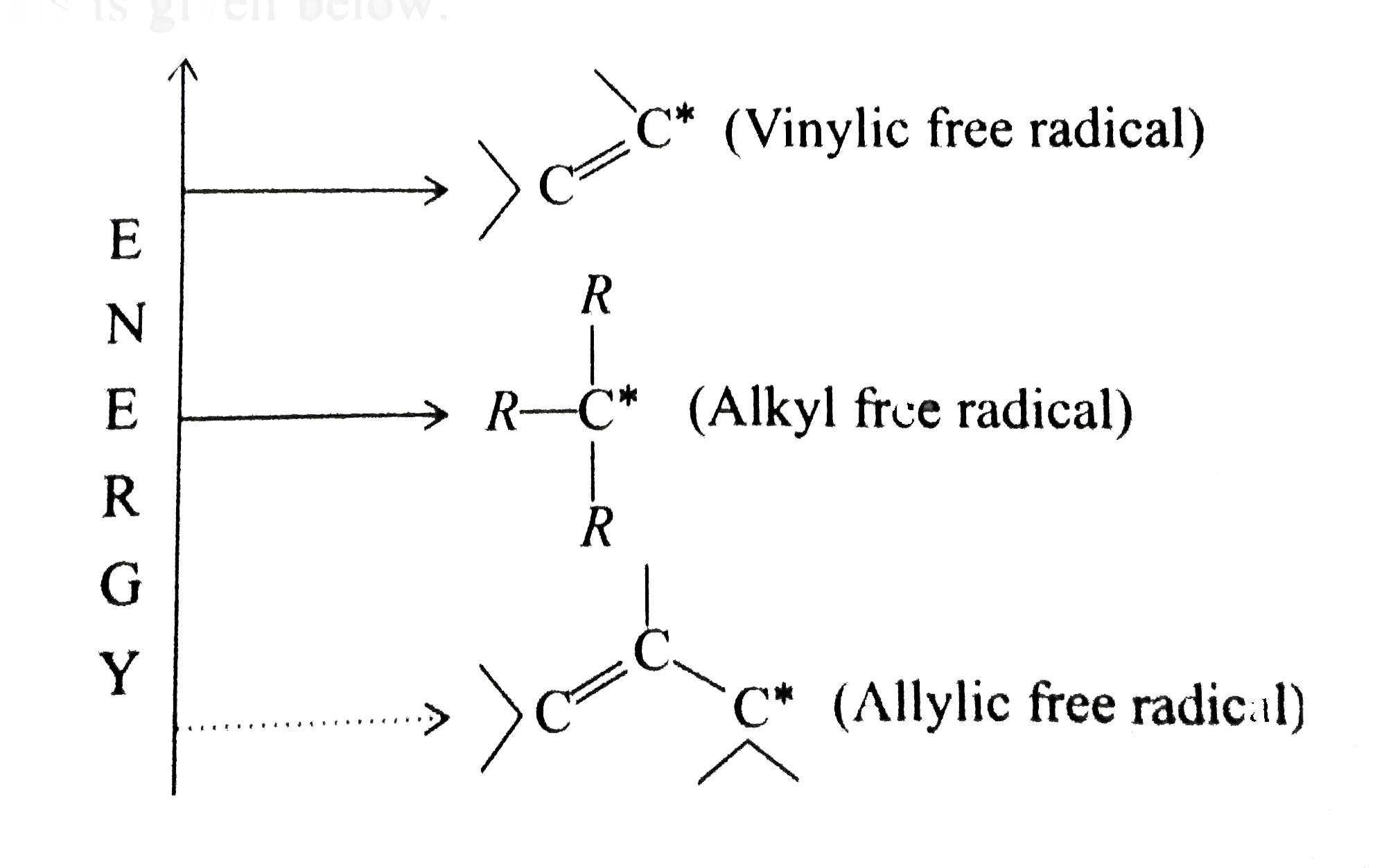
Select the correct statement(s) among the following :
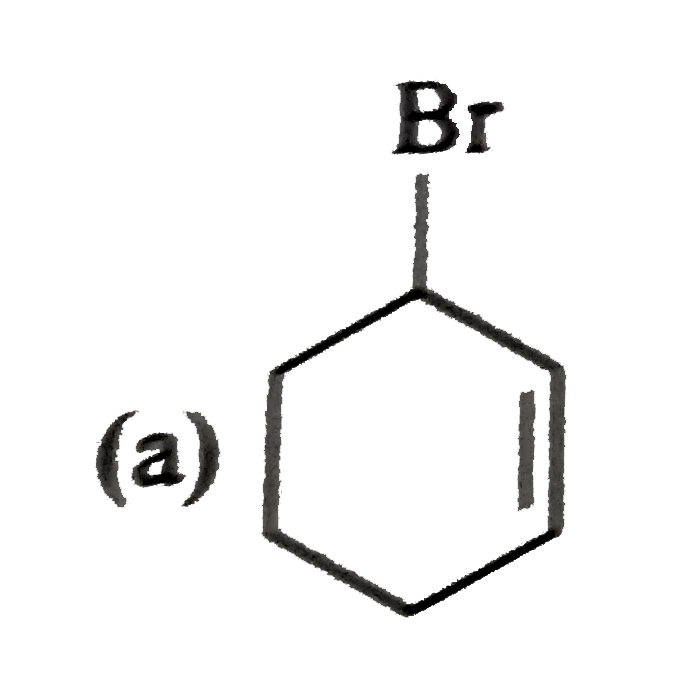

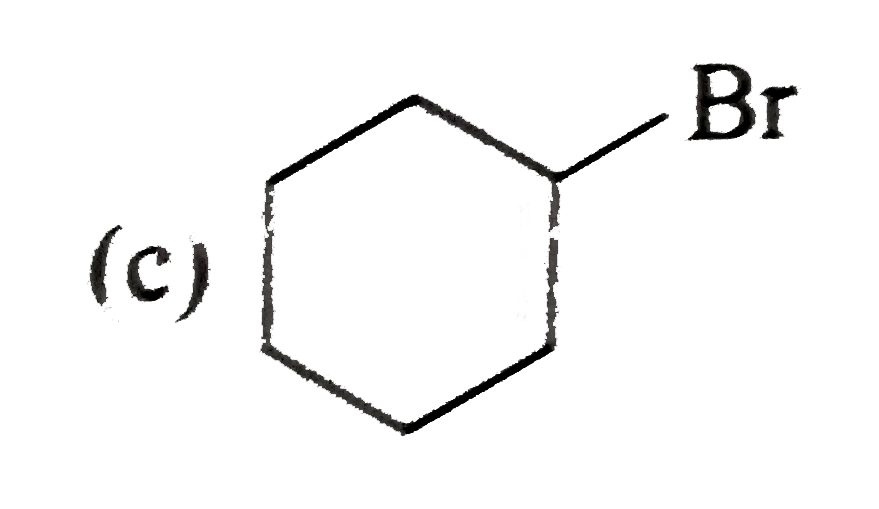
Connot be predicted
The correct Answer is:C
Step by step video, text & image solution for Karl Ziegler reported that alkenes react with N-bromosuccinimide (NBS) in presence of light to give products resulting from substitution of hydrogen by bromine at the allylic position i.e., the position next to the double bond. Let us consider the halogenation of cyclohexane. Energy level diagram for allylic vinylic and alkylic free redicals is given below: Select the correct statement(s) among the following : by Chemistry experts to help you in doubts & scoring excellent marks in Class 12 exams.
Topper's Solved these Questions
- BOOK - OP TANDONCHAPTER - HALOALKANES AND HALOARENES EXERCISE - Single Interger answer type questions14videos
HALOALKANES AND HALOARENES
- BOOK - OP TANDONCHAPTER - HALOALKANES AND HALOARENES EXERCISE - Matrix -Match Type Questions8videos
HALOALKANES AND HALOARENES
- BOOK - OP TANDONCHAPTER - ELECTROCHEMISTRYEXERCISE - Matrix-Matching Type Question3videos
ELECTROCHEMISTRY
- BOOK - OP TANDONCHAPTER - ISOMERISM (STRUCTURAL AND STEROISOMERISM)EXERCISE - INTEGER7videos
ISOMERISM (STRUCTURAL AND STEROISOMERISM)
Similar Questions
SN1 reaction is a first order nucleophilic substitution e.g.
CH3−CH3∣C∣CH3−Br+H2O→CH3−CH3∣C∣CH3−OH+HBr
The concentration of nucleophile does not appear in the rate law expression.
Reaction rate k[RX]
In a mulptistep organic reaction , the rate-limiting step is the slowest step . Rate determining step is represented by the following energy level diagram: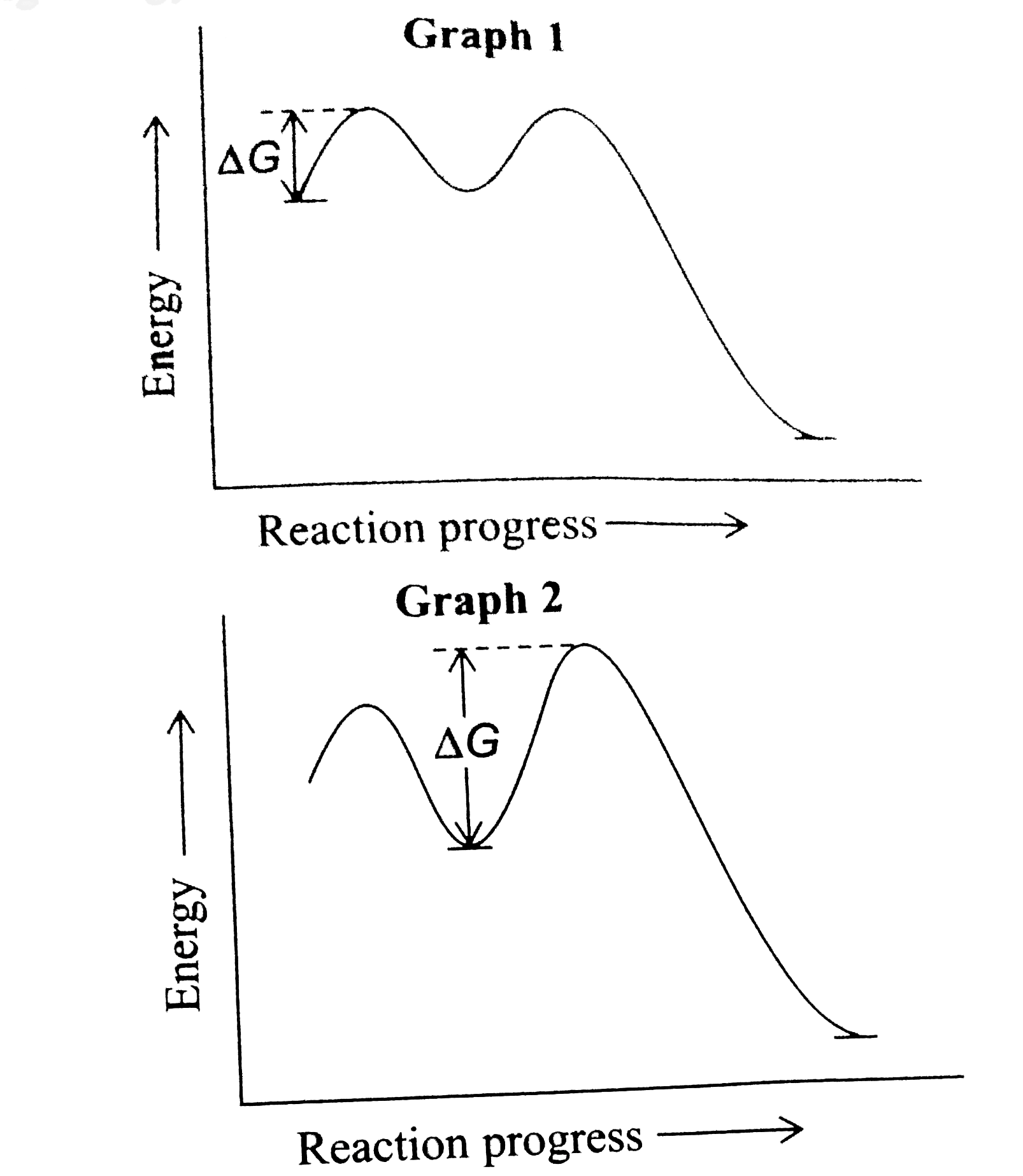
A reaction energy level diagram for an SN1 reaction .The rate limiting step is spontaneous dissociation of an alkyl halide to give a carbocation intermediate:

Select the correct statement (s) about the graph 1:View SolutionSN1 reaction is a first order nucleophilic substitution e.g.
CH3−CH3∣C∣CH3−Br+H2O→CH3−CH3∣C∣CH3−OH+HBr
The concentration of nucleophile does not appear in the rate law expression.
Reaction rate k[RX]
In a mulptistep organic reaction , the rate-limiting step is the slowest step . Rate determining step is represented by the following energy level diagram: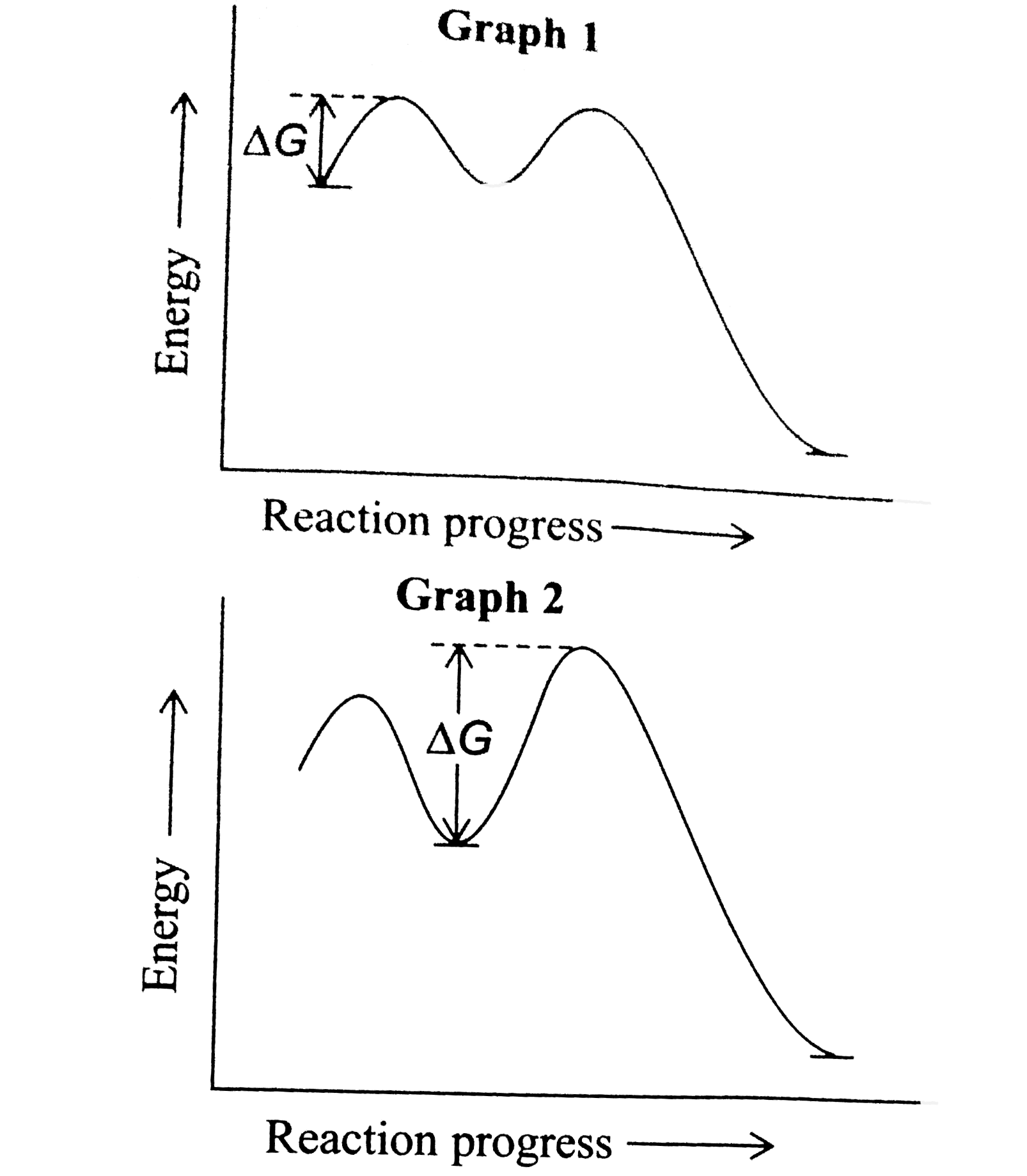
A reaction energy level diagram for an SN1 reaction .The rate limiting step is spontaneous dissociation of an alkyl halide to give a carbocation intermediate:
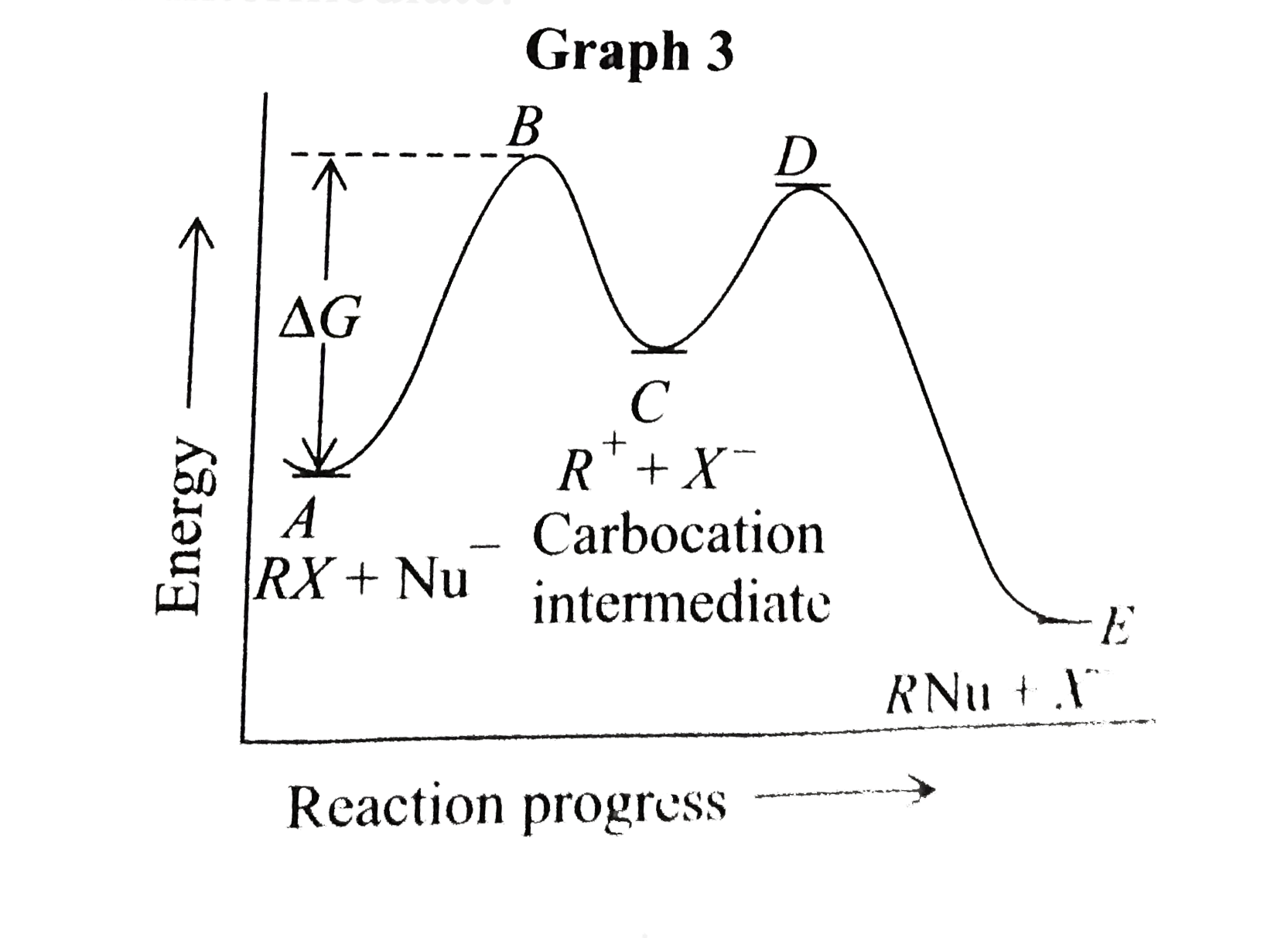
Select the correct statement(s) about the graph 2:View Solution
Knowledge Check
- Question 1 - Select One
Karl Ziegler reported that alkenes react with N-bromosuccinimide (NBS) in presence of light to give products resulting from substitution of hydrogen by bromine at the allylic position i.e., the position next to the double bond.
Let us consider the halogenation of cyclohexane.

Energy level diagram for allylic vinylic and alkylic free redicals is given below:

Which of the following sequences is correct about C-H bond energy ?A(C-H)Vinylic>(C-H) Alkylic > (C-H) AllylicB(C-H) Vinuylic <(C-H) Alkylic < (C-H) AllkylicC(C-H) Alkylic <(C-H)Vinylic <(C-H) AllylicD(C-H) Vinylic =(C-H) Alkylic =(C-H)Allylic - Question 2 - Select One
Karl Ziegler reported that alkenes react with N-bromosuccinimide (NBS) in presence of light to give products resulting from substitution of hydrogen by bromine at the allylic position i.e., the position next to the double bond.
Let us consider the halogenation of cyclohexane.

Energy level diagram for allylic vinylic and alkylic free redicals is given below:
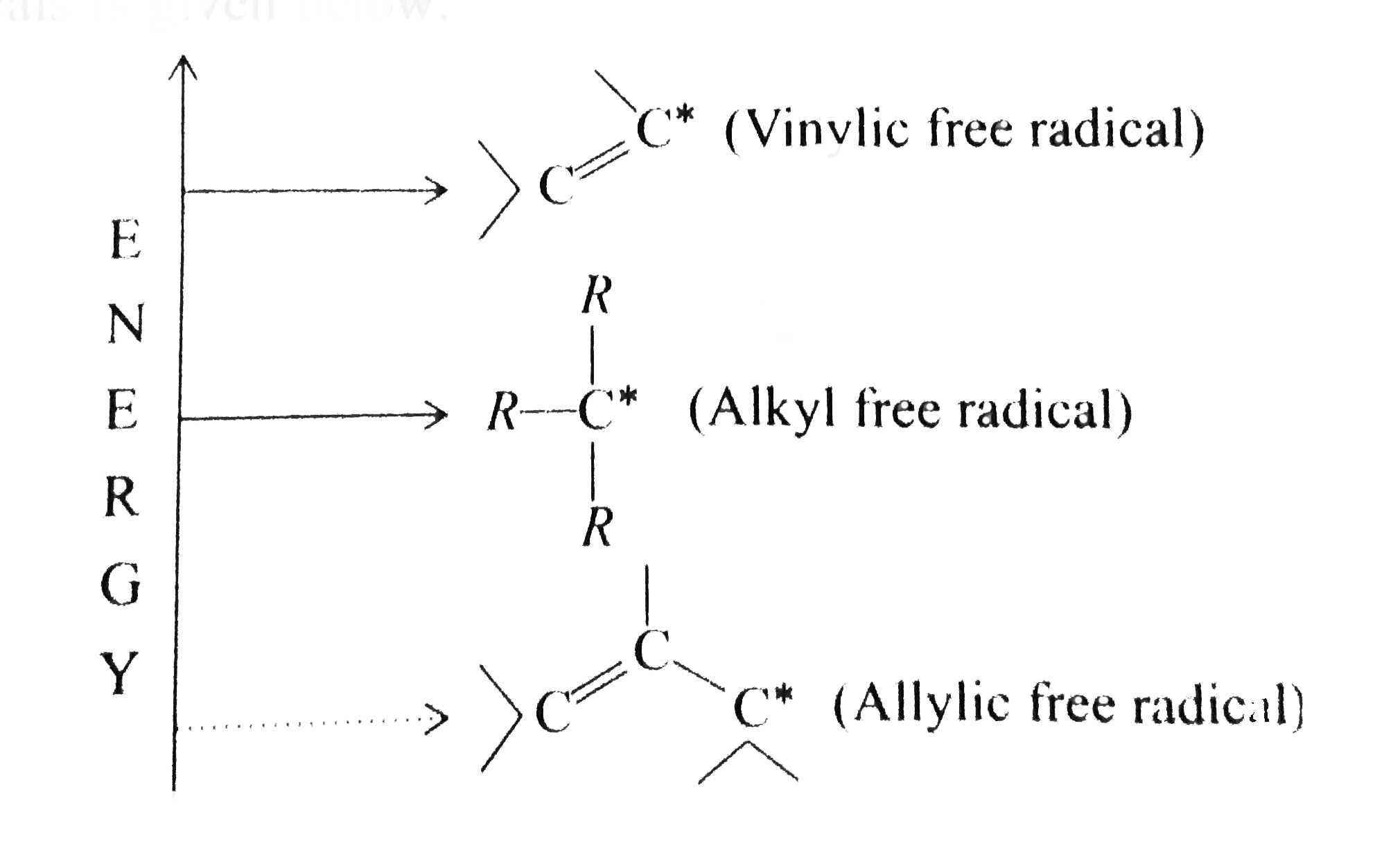
Consider the three types of C-H bonds in cyclohexene.
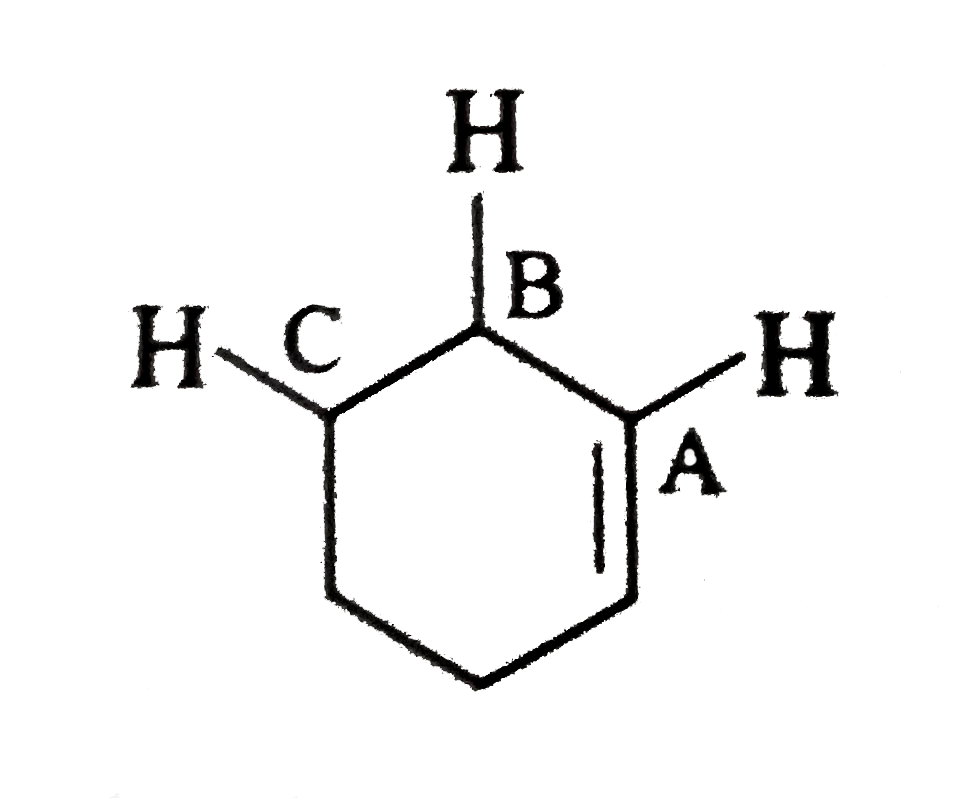
Which of the following is/arecorrectly matched?AA-Vinylic C-H bondBB-Allylic C-H bondCC-Alkylic C-H bondDAll of these - Question 3 - Select One
Karl Ziegler reported that alkenes react with N-bromosuccinimide (NBS) in presence of light to give products resulting from substitution of hydrogen by bromine at the allylic position i.e., the position next to the double bond.
Let us consider the halogenation of cyclohexane.

Energy level diagram for allylic vinylic and alkylic free redicals is given below:
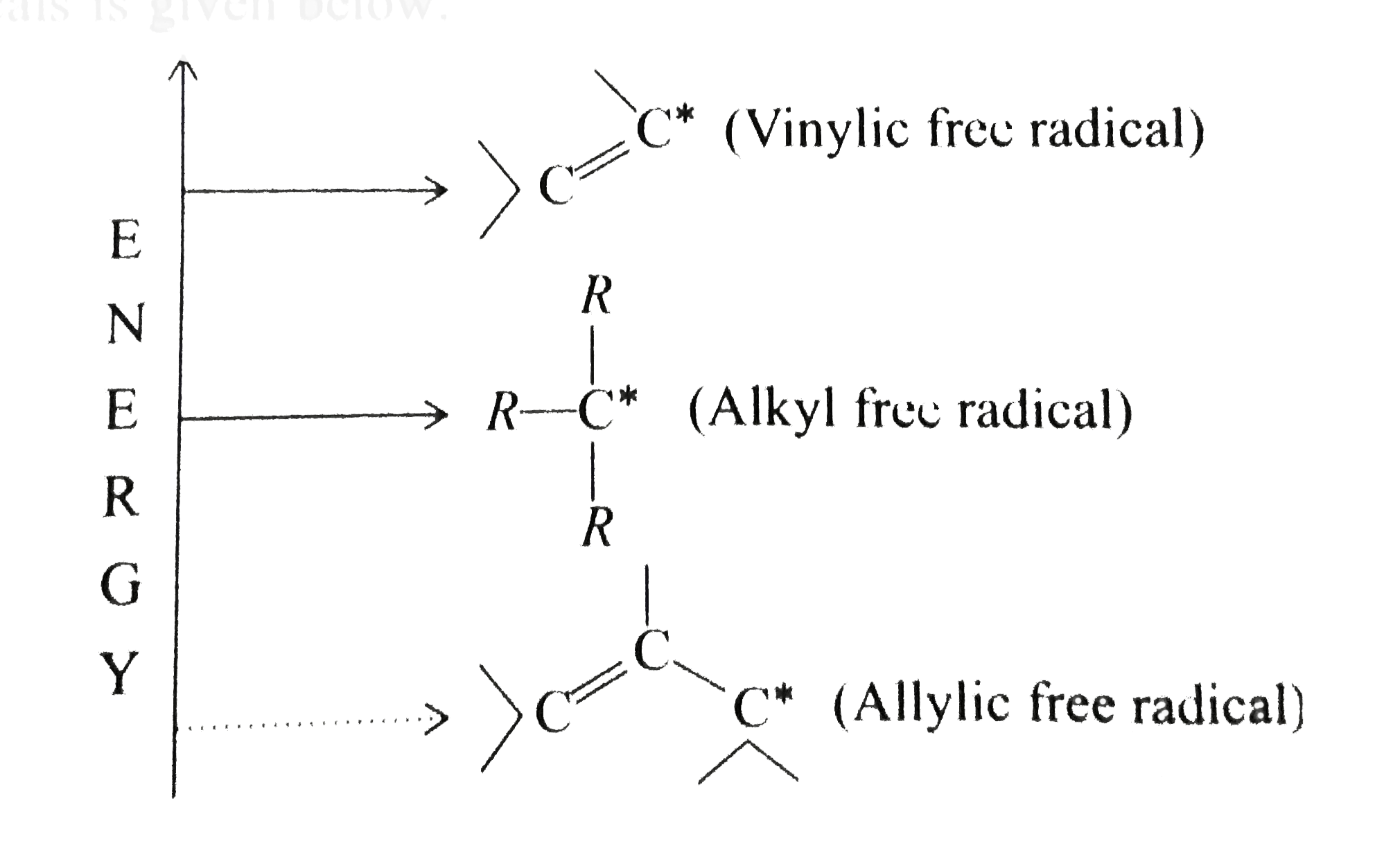
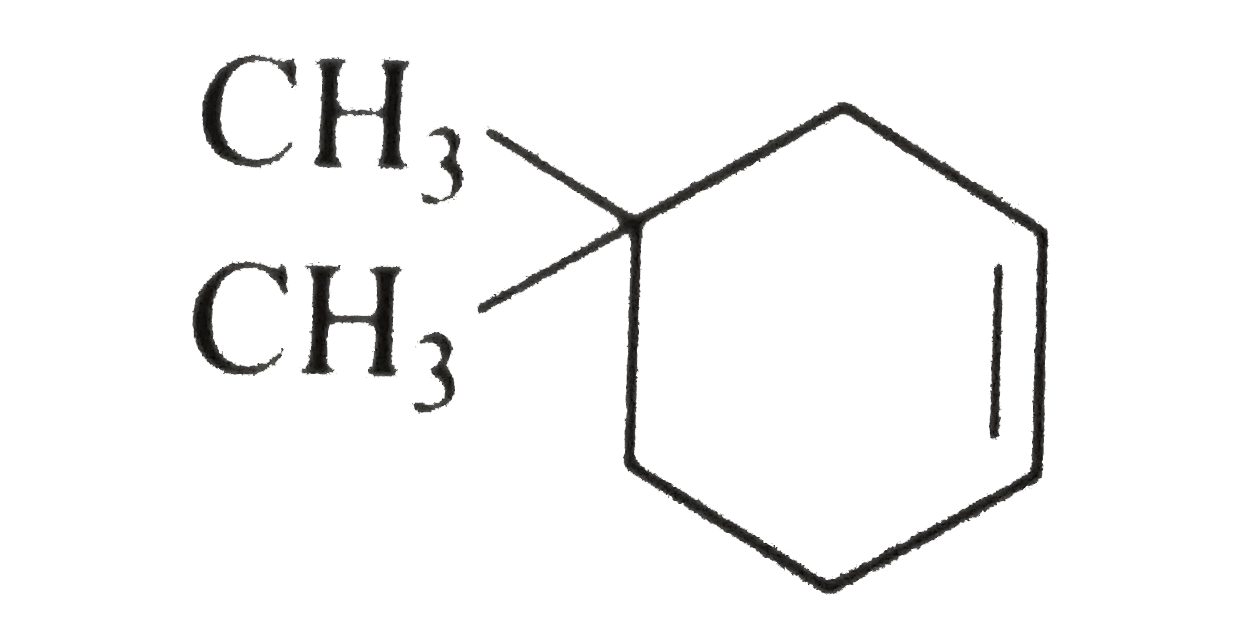
(4,4-Dimethyl cyclohexene)
Above compound on treatment with NBS gives allylic bromides . How many product (s) will be obtained in this reaction?AOneBTwoCThreeDFour
The energy profile diagrams are very important tool through which, we predict lot of things, like the amount of activation energy of the catalysed and uncatalysed reaction as well as for the backward reaction and forward reaction. Thershold energy of the catalysed and uncatalysed reaction. The graphs representing the energy profile diagram for catalysed and uncatalysed reactions are given below :

The graph of the lower energy barrier is the energy profile diagram for the catalysed reaction adn of the higher barrier is the energy profile diagram of uncatalysed reaction.
From the graph, it is clear that EafandEab are the activation energy of the respectively. EafandEab are the activation energy of the catalysed forward and backward reaction respectvely
The reaction which occurs by absorption of heat is known as endothermic reaction and by release of heat is known as exothermic reaction
For exothermic reaction, ΔH is negative and for endothermic reaction, ΔH is positive
From Arrhenius equation, we know that k=Ae−Ea/RT where k is rate constant which signifies effective number of collisions. A is known as Arrehnius constant, or maximum rate constant of frequency factor which signifies maximum number of collisions with proper orientation of reacting species per mole per second.
The catalysed reaction occurs at 500 K and the uncatalysed reaction occurs at 800 K in such way so that the rate of catalysed reaction and uncatalysed reaction becomes equal as well as the catalyst lower down the energy barrier by 60 J.
Answer the following questions on the basis of above paragraph
Which of the following statement(s) is/are correct about the catalysed and uncatalysed reaction ?View SolutionThe energy profile diagrams are very important tool through which, we predict lot of things, like the amount of activation energy of the catalysed and uncatalysed reaction as well as for the backward reaction and forward reaction. Thershold energy of the catalysed and uncatalysed reaction. The graphs representing the energy profile diagram for catalysed and uncatalysed reactions are given below :
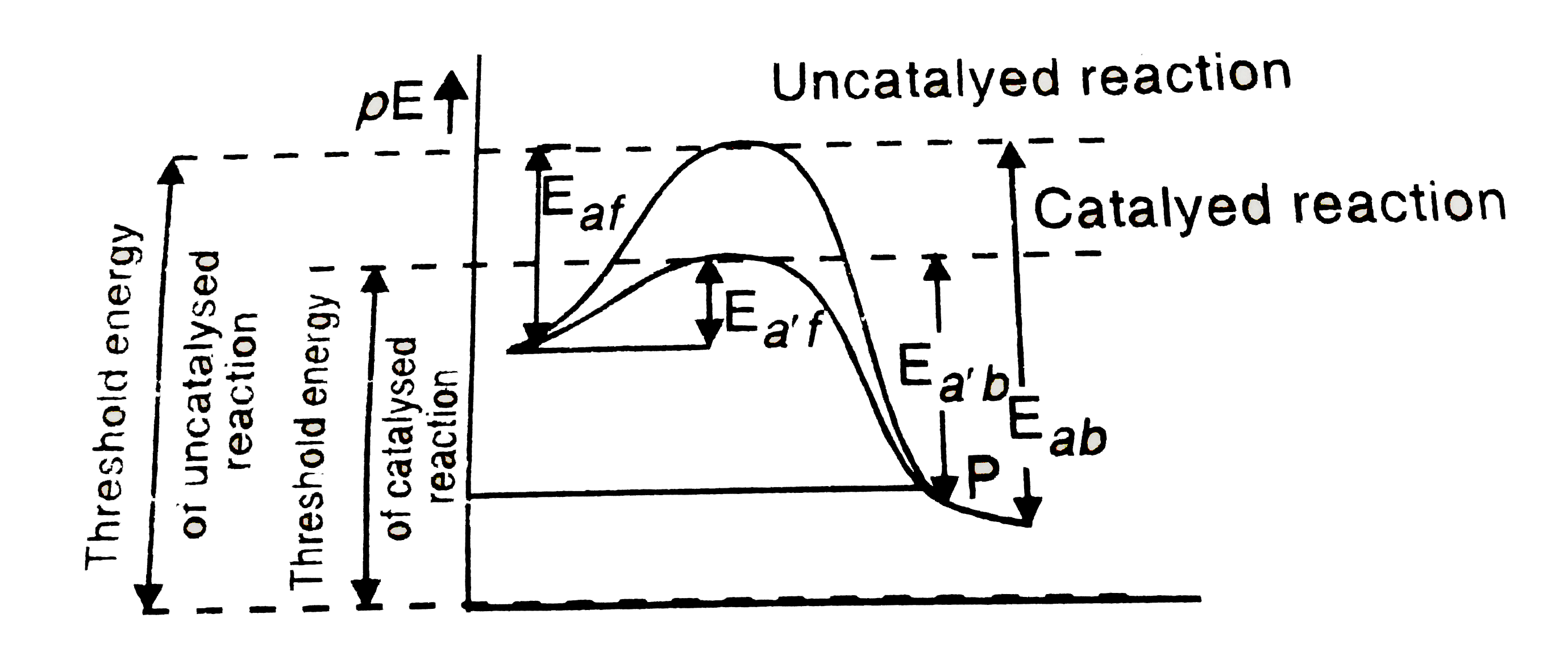
The graph of the lower energy barrier is the energy profile diagram for the catalysed reaction adn of the higher barrier is the energy profile diagram of uncatalysed reaction.
From the graph, it is clear that EafandEab are the activation energy of the respectively. EafandEab are the activation energy of the catalysed forward and backward reaction respectvely
The reaction which occurs by absorption of heat is known as endothermic reaction and by release of heat is known as exothermic reaction
For exothermic reaction, ΔH is negative and for endothermic reaction, ΔH is positive
From Arrhenius equation, we know that k=Ae−Ea/RT where k is rate constant which signifies effective number of collisions. A is known as Arrehnius constant, or maximum rate constant of frequency factor which signifies maximum number of collisions with proper orientation of reacting species per mole per second.
The catalysed reaction occurs at 500 K and the uncatalysed reaction occurs at 800 K in such way so that the rate of catalysed reaction and uncatalysed reaction becomes equal as well as the catalyst lower down the energy barrier by 60 J.
Answer the following questions on the basis of above paragraph
Which of the following statement(s) is/are correct for the catalysed and uncatalysed reactions ?View SolutionSN1 reaction is a first order nucleophilic substitution e.g.
CH3−CH3∣C∣CH3−Br+H2O→CH3−CH3∣C∣CH3−OH+HBr
The concentration of nucleophile does not appear in the rate law expression.
Reaction rate k[RX]
In a mulptistep organic reaction , the rate-limiting step is the slowest step . Rate determining step is represented by the following energy level diagram: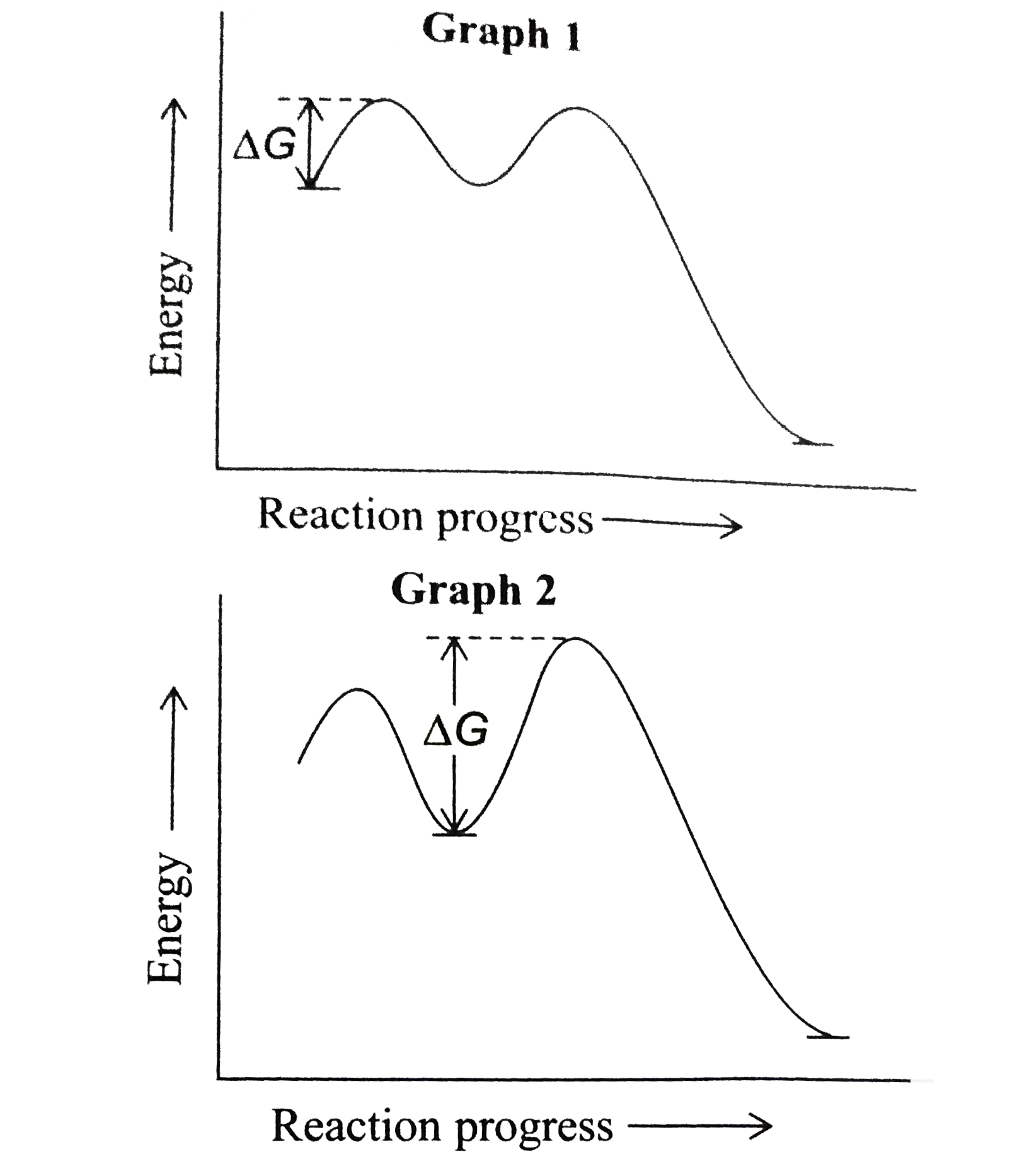
A reaction energy level diagram for an SN1 reaction .The rate limiting step is spontaneous dissociation of an alkyl halide to give a carbocation intermediate:
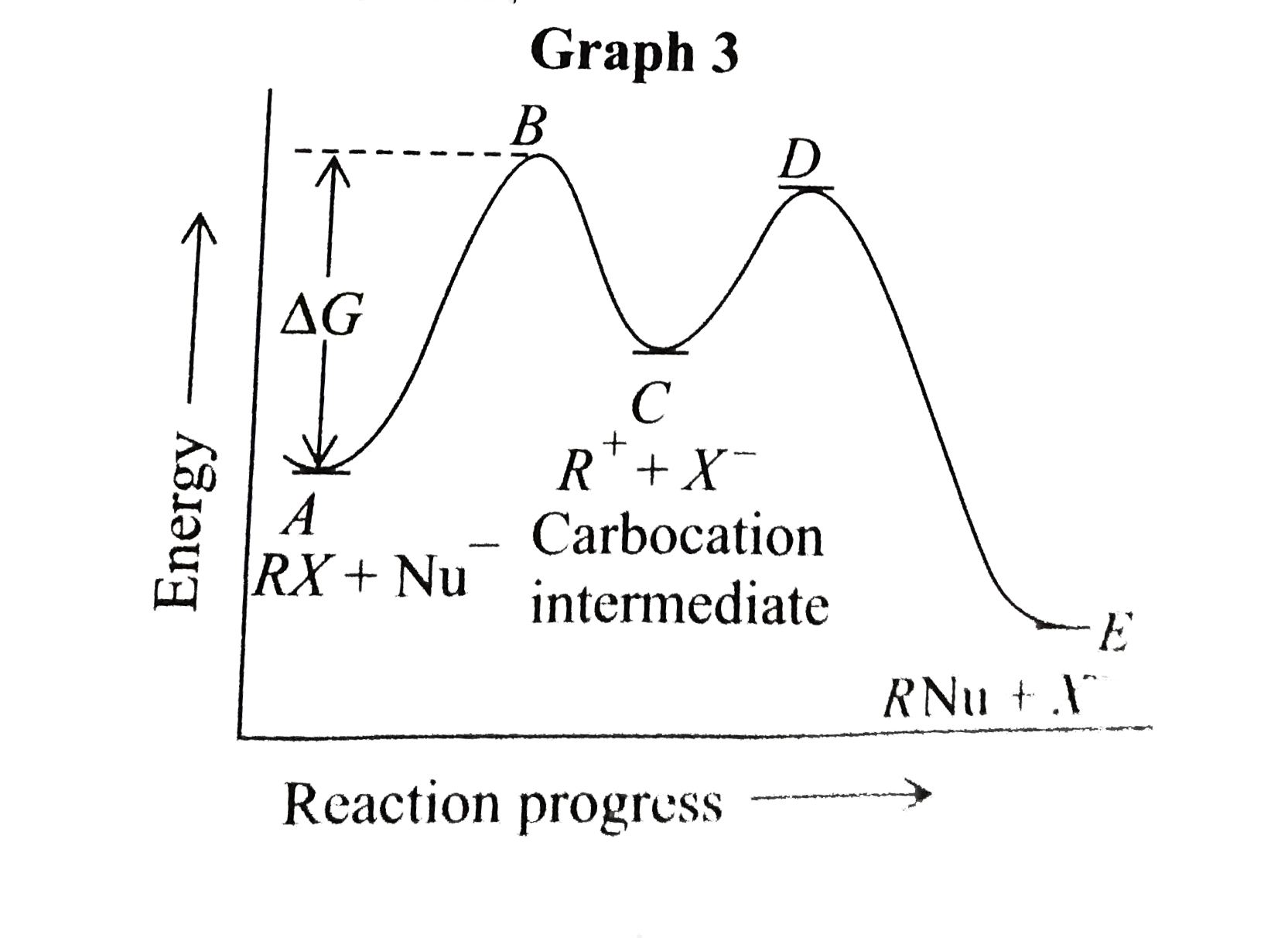
In SN1 reaction the hybridization changes in rate determination step. Select the correct change among the following:View SolutionRead the following paragraph and answer the questions given below ,
Stable equilibrium is of various type . Mechanical equilibrium is achieved when all particles are at rest and total potential energy of the system is minimum . At any stage where particles are at rest but the system is not at stabel equilibrium as it can reduce its potential energy by reverting to another position, is called metastable equilibrium . Thermal equilibrium is result from the absence of temperature gradients in the system. chemical equilibrium is obtained when no further reaction occurs between reacting substances, i.e forward and reverse rates of reaction are equal. when steam with solid iron at high temperature Fe3O4(s) and hydrogen gas are produced . But the reaction never goes to completion. this is because as the products are formed the reaction proceeds in reverse direction and when rate of reverse reaction is equal to rate of forward reaction , the concentration of reactants and products become constant and equilibrium is reached.
Which of the following is correct ?View SolutionRead the following paragraph and answer the questions given below ,
Stable equilibrium is of various type . Mechanical equilibrium is achieved when all particles are at rest and total potential energy of the system is minimum . At any stage where particles are at rest but the system is not at stabel equilibrium as it can reduce its potential energy by reverting to another position, is called metastable equilibrium . Thermal equilibrium is result from the absence of temperature gradients in the system. chemical equilibrium is obtained when no further reaction occurs between reacting substances, i.e forward and reverse rates of reaction are equal. when steam with solid iron at high temperature Fe3O4(s) and hydrogen gas are produced . But the reaction never goes to completion. this is because as the products are formed the reaction proceeds in reverse direction and when rate of reverse reaction is equal to rate of forward reaction , the concentration of reactants and products become constant and equilibrium is reached.
The primary objective of the passage isView Solution

